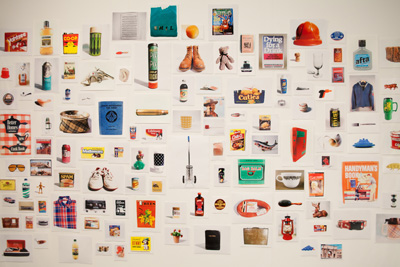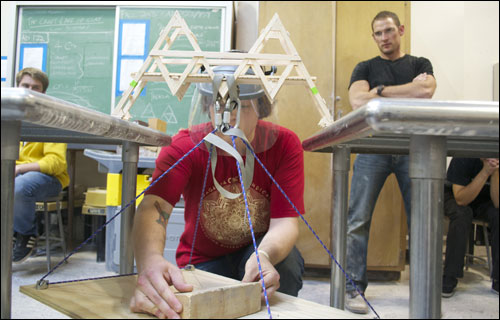The Foundations Program within the School of Art and Design is intended to provide a common experience of concepts, methods, and issues that are common throughout a wide variety of art and design disciplines.


FOUNDATIONS



The Foundations Program
The School of Art and Design's Foundations Program provides a shared experience of concepts and methods bridging our wide range of studio disciplines, including design fundamentals, creativity, and ideation processes, research and analysis approaches, and immersion in arts-related theories and philosophies. From 100 to 400-level courses, these classes strengthen students' abilities to tackle problems and provide insightful criticism while actively honing their written, oral, and visual communication skills. Experiences in Foundations will broaden the scope of each student's knowledge base by utilizing experiences that integrate with–and bolster–their expanding technical skills and conceptual development. Each course in the Foundations sequence helps actively prepare students for their future as professionals in art, design, social media design management, and education, whether as solo creators or as part of larger companies/collectives.
FOUNDATION PROGRAM
EMPHASIZES
Comprehension of visual structures as elementsthat are fundamental to the artistic process
Understanding of the relationship of art
and the artist to mass culture
Exhibition of conceptual development
Ability to solve problems. Ability to be self-critical
Ability to use written, oral, and visual
communication to present and
articulate concepts
FOUNDATION COURSES
AD101 - 4 credit hoursRrocess & Design
AD102 - 4 credit hours
Foundational Drawing
AD270 - 4 credit hours
Social Structures
AD485 - 4 credit hours
Foundations: Theories and Practices
Foundation Program provides a common experience of concepts, methods, and issues across a variety of disciplines
Click to Learn MoreFoundations Faculty
click to open/close
Foundations Coordinator
Tracy Wascom
Professor
B.F.A. University of Louisiana, Lafayette
M.F.A. Syracuse University

Emily Lanctot
Contingent Professor
B.F.A. Northern Michigan University
M.F.A. Vermont College of Fine Arts
Emily Lanctot recieved a BFA from Northern Michigan University in Drawing and Painting and recieved an MFA from the Vermont College of Fine Arts in Interdiscplinary Studio. Emily is the Curator of Collections and Outreach for the Devos Art Museum along with teaching foundations courses for the School of Art & Design.


Foundation Courses
click to open/closeAD 101 Process and Design
4 credit hours
An exploration of various technical methods of construction, production, and assembly used in the creation of art forms (2D, 3D, and 4D), integrated with an introduction to and application of the visual vocabulary of art (visual elements, principles of design, color theory).
AD 102 Foundational Drawing
4 credit hours
Introductory drawing course focusing on the methods and knowledge needed to create various types of spatial illusions and translate observed information onto a two-dimensional surface.
AD 270 Concepts and Culture
4 credit hours
Prerequisites: AD 101, AD 110 & Sophmore Standing
This course engages in the direct experiential understanding and development of ideas and intentions within art and design. The emphasis is on understanding the relationship of art/design and its maker to culture at-large as a method of contextualizing a student’s current and future work. The comparative study of cultural products, visual representation, and visual conditioning, both historically and in contemporary society, will be discussed.
AD 485 Foundations: Theories and Practices
4 credit hours
Prerequisite: AD 270
Utilizing a range of analytical and practical frameworks this course includes an intensive examination of the methods, production, values, philosophies and theories surrounding art and design.

















 NMU is an
NMU is an 



